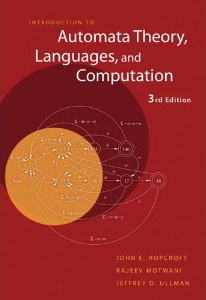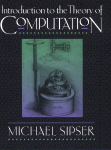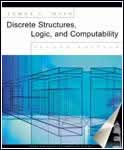|
Course Description
Weekly Schedule
Frequently Asked Questions
Course Overview
Required Textbooks
Grading Policy
Detailed Course Outline
Getting a Computer Account
Academic Integrity Policy
Class Mailing List
List Archives
ML Resources
Simulators
|
Fall Quarter 2010
Tuesday and Thursday 16:40–18:30
FAB 010
CRN 11010
Instructors
 |
Professor Andrew Black
black (at) cs.pdx.edu
503 725 2411
Office: FAB 115–10
Office hours: Monday 16:00–17:00 and Thursday 10:30–11:30, or by appointment.
|
 |
Teaching Assistant
Andrew Sackville-West
email: ajs4 (at) cs.pdx.edu
Office hours: Wed 15:30–16:30 and Fri 14:00–15:00 in the CS Department fishbowl
Recitation sections: Fri 13:00–14:00, FAB150.
|
Course Overview
This course might be subtitled How to think like a computer scientist. It gets to grips with the fundamental issues of what a computer is (in the abstract), what is computable and what is uncomputable. Yes, some things are uncomputable—and we will prove it. We also touch lightly on what is a computationally hard problem.
The approach of the course is mathematical: much of it is about proving properties of computing machines. In the past, I have also set programming assignments, which were intended to help students understand the algoriths involved. This was not very successful, so programming assignments will optional this year.
Required Textbook
 |
The required book is Introduction to Automata Theory, Languages, and Computation (3rd Edition) by John E. Hopcroft, Rajeev Motwani, and Jeffrey D. Ullman. ISBN-13: 978-0321462251
The version at the bookstore includes "Gradience", an online homework tool. If you buy the book elsewhere, make sure that you get the package that includes gradience, or be prepared to pay $24 to purchase gradience separately. (I've been told that you can also purchase Gradience seprately form the text at the PSU bookstore, for less money than the prince online. However, it may take a few days to get the access code this way.)
- Portal to the Gradiance system for on-line homeworks. The authors maintain an
- Errata list. Check here if you can't make sense of something in the text.
|
Recommended Textbook
 |
This book, Introduction to the Theory of Computation, by Michael Sipser, has been used at PSU in the past. List price is $129; the price at Amazon.com is $103.16. ISBN 978-0534950972.
The book is intended for a graduate course. It is a lot more succinct that Hein, and the notation is more standard. It also has fewer examples, and takes a more matehmatical approach. It is not required, but some students really liked it: I'm listing it here as resource that you may like to own, particularly if you can find a used copy.
|
For the Prerequisites
 |
The suggested book is Discrete Structures, Logic and Computability (any edition) by James L. Hein. Published by Jones and Bartlett. 2002. ISBN 978-0-7637-1843-5.
I'm going to assume that you are familiar with Chapters 1–10. Copies of this book are in the library, in my office, and with the CS Tutors.
Errata for the book.
|
Course Policies
Attendance
I recommend that you come to class, that you participate actively, and that you take notes. The act of taking notes (even if you never look at them again) is a powerful learning aid. I will generally make any visual aids, code samples, etc. that I used in class available on the web, but these are not a substitute for being in class and taking notes. If you do have to miss a class, say because of illness or work-related travel, you are responsible for getting notes and finding out what went on in class from another student.
Reading Assignments
Reading listed in the syllabus for each week should be completed before coming to class. I may check on the completion of reading assignments by various means: oral or written quizzes in class, written summaries, discussion (web-based or in class), etc. Anything in a reading assignment is fair game for an exam question.
Assignments
Handwritten or Printed assignments are due at the start of class. Gradianace Homeworks are submitted electronically, and may be attempted as often as desired. The grade on the final submission is the grade that counts.
Regrading
We do sometimes make mistakes. If you believe that we have not graded your assignment according to the published grading scheme, please let the instructor know in writing or by email within 1 week of the assignment being returned to you. Be specific as to why you think that the grading is inconsistent. We will then re-grade the whole assignment; the second grading will stand, whether it is higher or lower than the original grading.
Disabilities
If you are a student with a disability in need of academic accommodations, you should first register with the Disability Resource Center, and then notify the instructor to arrange for support services.
Makeup Exams
If you have a medical or a family emergency and must miss an exam, let me know, if at all possible before the exam, and I will work with you to find an alternative. Other reasons for absence such as scheduled travel are not emergencies and are not cause for a make-up.
Passing the Course
Every assignment in the course is connected to a learning objective. It is therefore important that you make an honest attempt to complete them all. A score of less than 20% on any assignment indicates that you have not met this condition, and is sufficient cause for failing the course. That means an F, at the discretion of the instructor.
Academic Integrity
Students are at university for two reasons: to learn stuff, and to gain a credential. Because the credential is important to many of our students, part of my role as a professor is to make sure that it has value. This means ensuring that the degree is awarded only to those students who have mastered the material in my course.
I have every sympathy for those who have difficulty with the material and seek the assistance of the instructor, the TA or their fellow students. I have no sympathy at all for those who decide that the fastest way to a degree is to cheat. I have been responsible for having cheating students dismissed from the university in the past, and I will not hesitate to seek to have cheaters dismissed in the future.
The most common form of academic dishonesty is representing the work of others as your own. In all written material, you are expected to cite others' work, but to do so in a way that makes it clear what part of the work is your own, and what part is credited to others. If you reproduce someone else's work in a way that makes it appear to be yours, you are guilty of plagiarism, in other words, of cheating.
Cheating on an assignment or exam will result in an automatic zero grade for that piece of work, and the initiation of disciplinary action at the University level.
Cheating and collaboration
I encourage collaboration on certain assignments; I will not tolerate cheating. Where is the line between these activities?
First, if an assignment is explicitly set up as a team assignment, you are of course allowed — indeed, required — to collaborate with the members of your team. In this case I will generally require only one completed piece of work to be turned in from the team as a whole.
For individual assignments, I encourage you to talk about the problem with your fellow students. During such discussion, you may even write something, perhaps the code of a critical method, or a key step in a proof, as a group. If you do this, there is a danger that you might reproduce that group work as if it were your own. To guard against this danger, do the following: after the group session, destroy any notes or code that you may have brought away with you. Then go and do something else for an hour or two: go for a walk or a bike ride, play your favorite sport, go to the gym: do something to flush your short-term memory. Then sit down with a blank sheet of paper or a blank computer workspace and start work on your own solution. If you have a photographic memory or otherwise won't be able to forget what you have seen someone else write, then don't participate in collaborative problem-solving sessions.
If I see the same code or writing assignment from two or more students I will take this as evidence that these guidelines have been ignored, and will assign a grade of zero to all of the students involved.
Grading Policy
The following represents my present intention; I reserve the right to vary the grade distribution if it seems necessary or desirable.
Final Examination: 35%
Midterm 20%
Graded Homeworks: 40%
Class Participation: 5%
Detailed Outline of the course
This will be changed. Lecture notes will be updated and readings from Hopcroft will be added. The schedule will also change as we see how much time we need for particular topics.
|
|
|
Date
|
Lecture
|
|
|
|
|
|
Section 1: Regular Languages and Finite Automata
|
|
|
w
e
e
k
1
|
|
Tuesday
28 September
Lecture Notes
|
|
1 |
Introduction
- course overview and organization
- entrance exam
- quick review of whole course
|
Hopcroft Chapter 1
old video
|
Review/Entrance Exam
Due Tuesday 5th October.
|
|
|
Thursday
30 September
Lecture Notes
|
|
2 |
Finite Automata
- Intro to DFAs
- Formal definition of DFA.
- Acceptance in a DFA (2 definitions)
- Representing and executing automata in JFLAP
|
Hopcroft Chapter 2, §2.1 and §2.2
old video
|
Assignment 1: due Thursday 7th October.
Assignment 1 solutions
|
|
|
|
|
|
|
|
|
|
|
w
e
e
k
2 |
|
Tuesday
5 OctoberLecture Notes
|
|
3 |
NFAs
- NFA as 5-tuple
- Running and accepting in an NFA
- Regular operations on NFAs
- equivalence of NFAs and DFAs
- Preview of the subset construction
- Λ-closure
|
Hopcroft §2.3 – §2.8
old video
|
|
|
|
Thursday
7 October
Lecture Notes
A worked problem on Proof by Mutual Induction.
|
|
4 |
Regular Expressions
- r.e.s as an algebra
- properties of r.e.s
- converting from res to FSA
- converting from FSA to res
|
Hopcroft Chapter 3.
old video
|
Assignment 3: FSAs
Due: Thursday 14th October.
Solutions to assignment 3
|
|
|
|
|
|
|
|
|
|
|
w
e
e
k
3 |
|
Tuesday
12 October
Lecture Notes
|
|
5 |
- Closure properties of regular languages
- Pumping Lemma for Regular Languages
- Working problems
Regular and non-regular languages |
Hopcroft Chapter 4.
old video
|
Assignment 2:
Homework 2 on Gradiance.
|
|
|
Thursday 14 October
Lecture Notes
|
|
6 |
Properties of Regular Languages
- Building NFAs from grammars
- Building grammars from NFAs
- L-indistinguishability
- The Myhill-Nerode Theorem
- minimizing a DFA
|
Hein §11.4.1
old video
|
Homework 4. On Gradiance. Due Friday, 22 October
|
|
|
Section 2: Context-free Languages and Finite Automata
|
|
|
w
e
e
k
4
|
|
Tuesday
19 October
Lecture Notes
|
|
7 |
Context Free Languages and Context-Free Grammars
- CF Grammars
- Various definitions for Pushdown Automata
- Non-equivalence of deterministic and non-deterministioc PDAs
|
Hopcroft Chapter 5
Example Pumping Lemma proof
old video
|
|
|
|
Thursday
21 October
Lecture Notes
|
|
8 |
CF Grammars and Pushdown Automata
- Converting PDAs into CFGs
- Converting CFGs into PDAs
- Chomsky Normal Form
Properties of CFLs
|
Hopcroft Chapter 6, §7.1–7.2
old video
(downloaded copy)
|
Homework 5: DFA Pumping Lemma, Regexp Generation, CFLs and PDAs. Due Thursday, 28 October
Homework 5 solutions
|
|
|
|
|
|
|
|
|
|
|
|
w
e
e
k
5
|
|
Tuesday
26 October
|
|
9 |
Revison class. Bring problems!
|
|
|
|
|
Thursday
28 October
|
|
|
Mid-term exam
The exam will cover regular and CF languages and their automata. The use of books is not allowed, but you may use a single 8.5" × 11" “crib sheet”, as a personal reference for definitions and formulae.
List of topics
Previous midterm exam
|
|
|
|
|
|
|
|
|
|
|
|
|
w
e
e
k
6 |
|
Tuesday 2 November
|
|
10 |
Review of Midterm
- Pumping Lemma for CFLs
- Proving that a language is not context-free
|
|
Homework 6 on gradiance |
|
|
Thursday
4 November
Lecture Notes
|
|
11 |
Parsing Techniques
Recursive-descent parsing
Top-down parsing with a parsing table
|
old video |
Homework 7
Sample proof using the CFG pumping lemma
|
|
|
Section 3: Turing machines and the Church-Turing Thesis
|
|
|
w
e
e
k
7
|
|
Tuesday 9 November
Lecture Notes
More Lecture Notes
TM for x times y
TM for 2^2^n
|
|
12 |
History and Philosophy of Turing Machines
- Basic Turing machines for simple examples
- Writing programs for the xTuringMachine simulator and the JFLAP simulator
Turing machine variants
- The Church-Turing Thesis
- Deterministic and Non-deterministic Turing Machines
- Multi-tape Turing Machines
- Random Access Memory TMs
- k-stack PDAs
- Universal Turing Machines
|
old video
|
Homework 8 design a Turing Machine
|
|
|
Thursday
11 November
no class
|
|
|
PSU Holiday — Veterans' Day |
|
|
|
|
|
|
|
|
|
|
|
|
w
e
e
k
8 |
|
Tuesday
16 NovemberLecture Notes
|
|
13 |
Variations on Turing Machines
- The Church-Turing Thesis
- Variant Turing Machines
Other models of Computation
• Simple programming language
• Type 0 (unrestricted) Grammars
|
old video (start at 1h20)
old video
|
|
|
|
Thursday 18 November
Other Models
Lambda Calculus
|
|
14 |
• Partial Recursive Functions
• Lambda calculus
• Markov Algorithms
• Recursive Functions
• Lambda calculus
• building recursive functions in the λ-calculus
Tim Sheard's Lambda Calculator (download and run Hugs, type ":load LambdaCalculator.hs", and then "main")
|
old video on Lambda Calculus
Reading on Lambda calculus
|
|
|
|
|
|
|
|
|
|
|
|
|
w
e
e
k
9
|
|
Tuesday
23 November
Lecture Notes
|
|
15 |
Decidable & Undecidable Problems
- The Halting problem
- Reduction
- Unsolvability
|
Sipser Section 4.2
old video
|
Homework 9: Turing machines and λ-calculus
|
|
|
Thursday
25 November
No class
|
|
|
Thanksgiving Day: PSU is closed.
|
|
|
|
| Section 4: Computability |
|
|
w
e
e
k
10
|
|
Tuesday
30 November
Lecture Notes
|
|
16 |
Computational Complexity
|
old video
|
|
|
|
Thursday
2 December
NP-completeness Lecture Notes
Review Lecture Notes
|
|
18 |
Complexity — NP Completeness.
CYK Algorithm, Cook-Levin Theorem
Reducibility of CLIQUE to SAT
|
old video
|
|
|
|
|
Tuesday
7 December
17:30–19:20
Sample Final Exam,
List of topics
|
|
|
Final Exam
The exam will cover the whole of the course. The use of books is not allowed, but you may use a single 8.5" × 11" “crib sheet” (double-sided), as a personal reference for definitions and formulae.
|
|
|
|
Most recently modified on Thursday 2 December 2010 at 21.54
Andrew P. Black
|